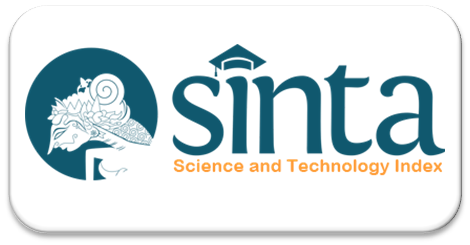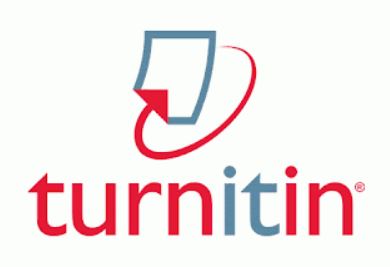Liquid Waste Management at the Environmental Health Installation at Dumai Regional Public Hospital
DOI:
https://doi.org/10.35960/vm.v17i1.1327Keywords:
Hospital liquid waste, medical waste, WWTPAbstract
The management of hospital liquid waste should be a concern based on WHO data indicating that 75% - 90% of the waste generated is household waste and 10% - 25% is hazardous waste, thus requiring management in accordance with applicable regulations. The aim of this research is to investigate the management of liquid waste carried out at the Environmental Health Installation of Dumai Regional Public Hospital in 2023. The research method used a qualitative descriptive design. Research informants were obtained using purposive sampling technique involving 6 individuals consisting of liquid waste management implementers, head of departments, and installation heads, as well as parties involved in liquid waste supervision. Data collection was conducted through in-depth interviews, document analysis, and field observations. Findings indicate the need to enhance the competency of Environmental Health Installation personnel in managing liquid waste. The management of liquid waste is expected to comply with the Standard Quality Control of Liquid Waste Management. Periodic monitoring of the physical, chemical, and microbiological quality of liquid waste is necessary. In conclusion, the management of liquid waste at the Environmental Health Installation of Dumai Regional Public Hospital in 2023 has been well conducted. This residency report demonstrates that the procedures for collection, storage, handling, and disposal of liquid waste at the hospital are in accordance with prevailing safety, environmental, and health standards.
References
Eunike, E. B. (2019). Sistem Pengolahan Limbah Cair Rumah Sakit Mitra Sejati Medan [Karya Ilmiah]. Poltekkes Kemenkes Medan.
Fauziah, M. (2005). Pengelolaan Aman Limbah Layanan Kesehatan. Jakarta: EGC.
Gnaro, T., Ali, A., Adom, A., Abiassi, E. S., Degbey, C., Douti, Y., Messan, D. K., Sopoh, G. E., & Ekouevi, D. K. (2022). Assessing Biomedical Solid and Liquid Waste Management in University Hospital Centers (CHU) in Togo, 2021. Open Journal of Epidemiology, 12(04), 401–420. https://doi.org/10.4236/ojepi.2022.124033
Hasan, A. (2006). Dampak penggunaan klorin. J. Tek. Lingk. P3TL-BPPT, 7(1), 90–96.
Herman, P. W., & Wahyuni, A. (2023). The Importance Of Health Legal Regulations On Hospital B3 Waste Management. Jurnal Informatika Medis (J-INFORMED), 1(1), 1–10. https://doi.org/10.52060/im.v1i1.1167
Julianto, A., Rupiwardani, I., & Sari, D. (2023). Perbedaan Penurunan Kandungan Bakteri Escherichia Coli Dengan Pemberian Klorin Pada Limbah Cair RSUD dr. H. Koesnadi Bondowoso. Jurnal Kesehatan Tambusai, 4(3), 2307–2313.
Nurmansyah, Y. , & Ulfah, M. (2023). Analisis kualitas limbah cair di rumah sakit umum daerah besemah kota pagar alam 1. JMC, 12(22), 282–289.
Kesehatan Lingkungan, Pub. L. No. 2, https://peraturan.bpk.go.id/Details/245563/permenkes-no-2-tahun-2023 1 (2023).
Permenkes No 18, Pub. L. No. 18, https://peraturan.bpk.go.id/Details/152561/permenkes-no-18-tahun-2020 1 (2020).
Permen LHK No 6, Pub. L. No. 6, https://peraturan.bpk.go.id/Details/211000/permen-lhk-no-6-tahun-2021 1 (2021).
Rejeki, M., Probandari, A., & Darmanto. (2014). Optimisasi Manajemen Pengelolaan Limbah Cair Rumah Sakit Sebagai Upaya Peningkatan Level Higienitas Rumah Sakit Dan Lingkungan.
RSUD Kota Dumai. (2022). Profil RSUD Kota Dumai.
Sugiono. (2019). Metode Penelitian Pendidikan Pendekatan Kuantitatif, dan Kualitatif R&D. Alfabeta.
TapiTapi, G., Andi Surahman Batara, A., Rahman, Nurlinda, A., & Baharuddin, A. (2021). Pengelolaan Limbah Medis Padat di Rumah Sakit Kota Tobelo. Window of Public Health Journal, 2(5), 889–897.
Downloads
Published
How to Cite
Issue
Section
License
Copyright (c) 2024 Al Furqan, Oktavia Dewi, Herman M Purwaonegoro

This work is licensed under a Creative Commons Attribution 4.0 International License.
Submitted paper will be firstly reviewed by the editors to determine whether the paper meet the edition theme and submission guidelines. Papers which meet the theme and the guidelines will be assigned to selected reviewers for peer-reviews. Viva Medika: Jurnal Kesehatan, Kebidanan dan Keperawatan is a double blind peer-reviewed journal which involves reviewers based on their experties relevant to the topic of the paper. Final decision of paper acceptance is solely decided by the editors according to reviewers' comment.
Plagiarism and self-plagiarism are prohibited. Viva Medika: Jurnal Kesehatan, Kebidanan dan Keperawatan uses PlagiarismCheckerX and iThenticate to scan papers for detecting plagiarism. Thus, Appropriate citation and quotation should be used

.png)








